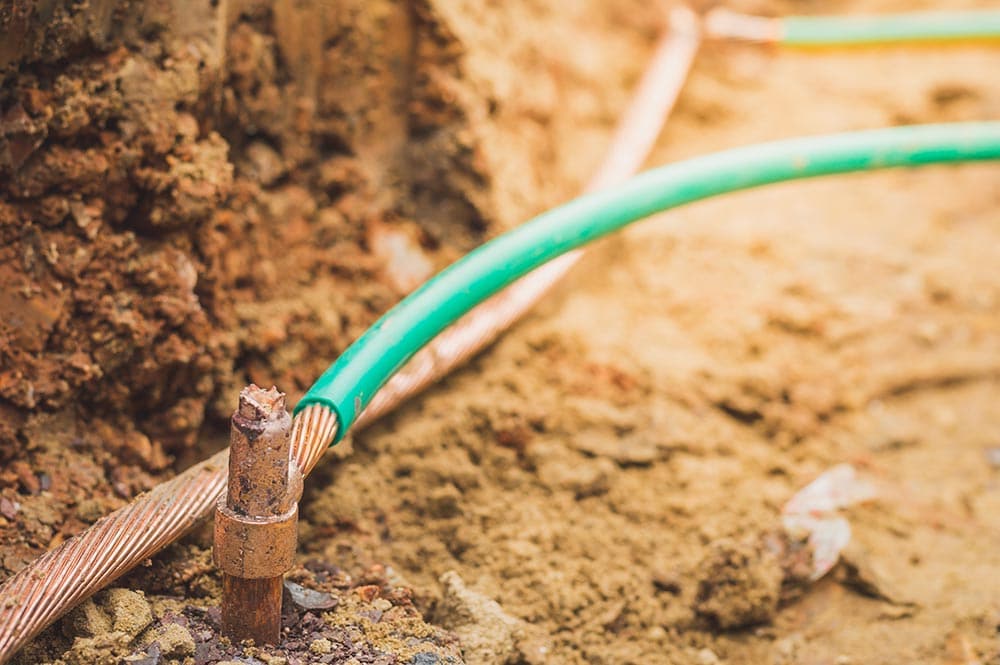How to Ground a Portable Generator: 4 Steps to Follow
-
Ed Malaker
- Last updated:

Portable generators are important tools that many people use to power their devices while out on a camping trip. They are also helpful during an emergency power outage. However, many people have concerns about how to ground the generator properly. If this sounds like your situation, keep reading as we provide a step-by-step guide to making it safe so you will feel more confident about using it. We also explain how to determine if you need to ground your generator at all.
Before You Begin
If you need to ground your generator, gather all your tools and supplies before you start so you can complete the project in one go. Fortunately, grounding a generator requires only a few tools. You will need plenty of copper wire to reach from your grounding rod to the generator and a good pair of wire strippers to prepare it. You will also need a copper grounding rod at least 4 feet long, though the National Electrical Code recommends a grounding rod at least 8 feet long. You also need a good hammer or mallet, = water, and a pair of pliers.
- Several feet of high-quality copper wire
- Wire strippers
- Copper grounding rod
- Hammer or mallet
- Pliers
- Water
The 4 Steps for Grounding a Portable Generator
1. Hammer in the Grounding Rod

The best place to begin is by hammering in your grounding rod. Many portable generators will use a 4-foot rod, but an 8-foot rod will provide more safety, though hammering the rod that deep can be challenging. Water can help soften the ground to make the project easier, and you can also insert the rod at a slight angle, but it shouldn’t exceed 45 degrees.
2. Attach the Wire to the Grounding Rod

With only a few inches of the rod sticking out of the ground, it’s time to work on the copper wire. Measure a suitable length of wire and cut it to size. Remember that this wire will connect your generator to the grounding rod, so if you intend to move it around frequently, you will need more wire. You also don’t want to cut the wire too short and make connecting to the generator difficult. A too-short wire might also detach easily.
With your wire cut to size, you will need to use the wire strippers to remove the protective shield on both ends, leaving only a small amount of wire exposed on each end. Most grounding rods will have a hook or hole at one end for the ground wire. Wrap the copper wire around this rod part, and use pliers to help create a good connection.
3. Attach the Wire to the Generator
Now, attach the other end of the wire to the generator. It should have a bolt that you can loosen to expose a metal shaft that you can twist the copper wire around. Once you attach the wire, you can re-tighten the bolt to secure the wire and create a good connection.
4. Start Your Generator

After completing the previous steps, you have added a ground to your portable generator, and it’s ready to go! You can start the generator and operate it as usual.
Frequently Asked Questions
What Is Grounding?
A ground is a direct connection to the Earth, and it’s an important part of any electrical circuit because it helps discharge excess electricity. Grounding helps reduce interference from other electrical components and minimize damage from lightning and electrostatic buildup. In most cases, the ground goes directly to the Earth, but a large piece of steel or other metal can also be a good ground. For instance, your automobile uses its chassis as its ground, and many portable generators use its metal frame.
Do I Need to Ground My Generator?
Many older and larger generators will require you to attach a ground, while many newer generators have a large metal frame that they use instead. Reading the owner’s manual for your model is the best way to determine if you need to attach a ground. However, even if your generator has a frame, if there is a bolt that enables you to connect an external ground, we recommend using it. An 8-foot copper pole that you hammer into the Earth will provide more protection than the steel frame, especially if lightning is involved.
What Happens If I Don’t Ground My Generator?
Failure to ground your generator can cause damage to any electrical components that you connect to it, and you might even get shocked while using it. The generator itself might also get damaged or overheat.
Summary
Generators are important tools, but it’s essential to ground them properly so you don’t damage your equipment or get electrocuted. Grounding only takes a few seconds once you hammer in the copper ground, and it will keep you and your equipment safe. Some newer generators won’t need grounding because they use a frame, but we recommend grounding them anyway if they have a connection available, especially if you are near water or intend to use the generator for several days.
Featured Image Credit: Potashev Aleksandr, Shutterstock
Contents


